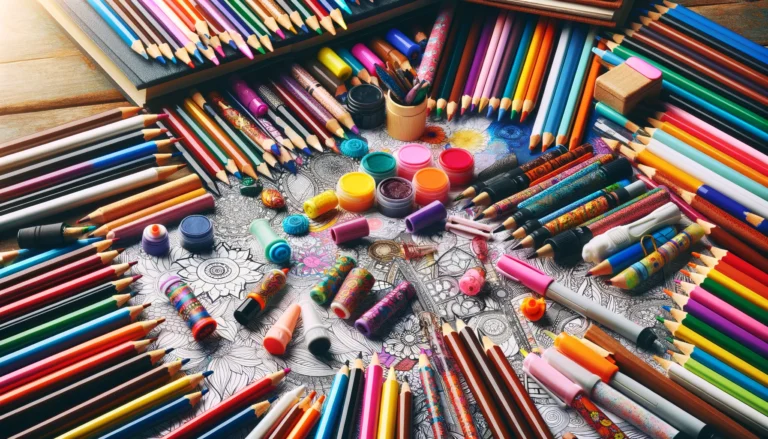Coloring is not just about the images; the tools you use can significantly affect your experience and the final outcome. From the soft hues of crayons to the vibrant shades of markers and the precision of colored pencils, each tool offers a unique coloring experience. This article reviews the different types of coloring tools and provides tips for choosing the best ones for various coloring pages, ensuring an enjoyable and satisfying coloring session.
Crayons: The Classic Choice
Characteristics:
– Crayons are known for their ease of use and wide availability.
– They provide a soft texture and can be great for covering large areas with color.
– Crayons are often the first coloring tool children use, making them a nostalgic option for many adults.
Best for:
– Simple designs with larger coloring spaces.
– Projects that don’t require fine details, such as children’s coloring pages.
Tips:
– Choose high-quality crayons that don’t break easily and offer a smooth coloring experience.
– Consider crayons with a wide range of colors to enhance the depth and variety in your artwork.
Colored Pencils: Precision and Versatility
Characteristics:
– Colored pencils allow for detailed work and shading, making them ideal for intricate designs.
– They come in various types, including wax-based, oil-based, and water-soluble pencils, each offering different textures and blending capabilities.
Best for:
– Detailed coloring pages with intricate patterns and designs.
– Adult coloring books that require precision and shading.
Tips:
– Invest in a set of high-quality colored pencils with a range of shades for more nuanced coloring.
– Practice blending and layering to take full advantage of the versatility of colored pencils.
Markers: Bold and Bright
Characteristics:
– Markers provide vibrant colors and a smooth application.
– They are available in various tip sizes, from fine to broad, allowing for both detailed and broad coloring.
Best for:
– Coloring pages that require bold, consistent color application.
– Projects where you want to make a strong visual impact with bright, saturated colors.
Tips:
– Opt for markers that are non-bleeding to ensure clean lines and avoid damaging the paper.
– Consider alcohol-based markers for their blendability and water-based markers for their ease of use and cleanup.
Gel Pens: Sparkle and Shine
Characteristics:
– Gel pens offer a range of effects, including metallic, glitter, and neon, adding a unique flair to your coloring.
– They are perfect for adding highlights, embellishments, or working on dark paper.
Best for:
– Adding details and special effects to your coloring pages.
– Embellishing areas with sparkles, shines, or vivid colors.
Tips:
– Ensure your gel pens are of high quality to avoid skipping or uneven application.
– Use gel pens as a finishing touch to add highlights or accents to your colored pages.
Choosing the Right Tool
Selecting the right coloring tool depends on the type of coloring page and the desired effect. Consider the following factors when choosing your tools:
– Detail level of the page: Finer tips and pencils are better for detailed designs, while broad-tipped markers and crayons suit larger, simpler areas.
– Paper quality: Ensure the paper can handle the type of tool you’re using, especially with markers that may bleed through.
– Desired outcome: Think about whether you want a vibrant, subtle, or textured look and choose your tools accordingly.
Conclusion
The right coloring tools can transform your coloring experience, bringing your images to life with depth, vibrancy, and precision. By understanding the characteristics and best uses for crayons, colored pencils, markers, and gel pens, you can select the ideal tools for your coloring projects. With the right tools in hand, every coloring session can become a masterpiece of expression and creativity.
